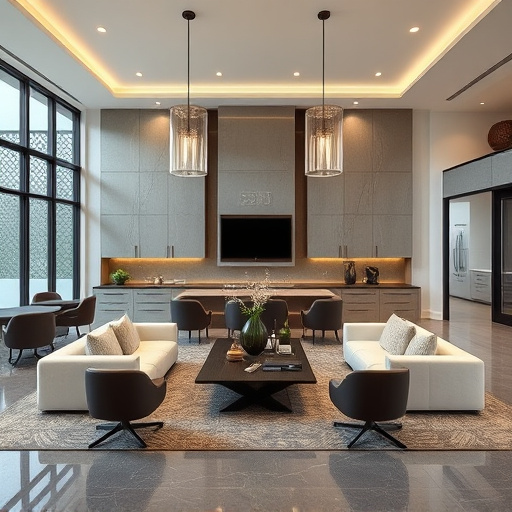Revolutionize Your Kitchen: Soft-Close Drawer Technology in New Cabinets
Soft-close drawer technology is revolutionizing home renovations, especially with new cabinets. It o…….
In today’s fast-paced world, efficient storage solutions are not just a luxury but a necessity. This is where new cabinets come into play, offering innovative approaches to enhancing space utilization, organization, and accessibility. This comprehensive article aims to explore the concept of new cabinets, tracing its evolution, global impact, economic implications, technological innovations, regulatory frameworks, challenges, and future potential. By delving into these aspects, we will uncover how new cabinets are reshaping industries, homes, and urban landscapes worldwide.
New cabinets represent a modern interpretation of storage furniture, designed to cater to contemporary needs and aesthetics. They are more than just traditional wooden or metal closets; they are versatile, customizable, and often feature innovative design elements. At their core, new cabinets consist of:
Historically, cabinets have evolved from simple wooden boxes to sophisticated, multifunctional pieces. The concept of new cabinets builds upon this tradition, incorporating advanced materials, technology, and design principles to create efficient, flexible storage solutions.
The influence of new cabinets is a global phenomenon, with trends emerging from various regions shaping the industry’s direction. Here’s an overview:
Global trade and e-commerce have facilitated the exchange of ideas and designs, resulting in a unified yet diverse cabinet market. This cross-cultural collaboration has led to the creation of unique, region-specific cabinet styles while maintaining global trends.
The new cabinets market is a significant contributor to the global furniture industry, with several economic factors at play:
| Economic Aspect | Description |
|---|---|
| Market Size | The global cabinet market was valued at USD 120.5 billion in 2022 and is projected to grow at a CAGR of 4.8% from 2023 to 2030 (Source: Grand View Research). |
| Growth Drivers | Rising disposable incomes, increasing urbanization, and the growing trend of home office setups are driving market growth. |
| Investment Patterns | Private equity firms have shown interest in cabinet manufacturers, recognizing the potential for expansion and innovation. Strategic investments in R&D and digital transformation are shaping industry trends. |
| Regional Disparities | North America and Europe account for a significant share of the market due to higher disposable incomes and advanced consumer preferences. Asia-Pacific is expected to witness the fastest growth, fueled by urbanization and changing lifestyles. |
The economic landscape provides opportunities for cabinet manufacturers to expand their reach, invest in technology, and cater to diverse customer segments.
Technology plays a pivotal role in shaping the future of new cabinets, with several innovations already making an impact:
The new cabinets industry is subject to various policies and regulations that impact manufacturing, safety, and environmental standards. Here’s a snapshot of key considerations:
Despite its numerous benefits, the new cabinets industry faces several challenges and criticisms:
A leading furniture manufacturer in the USA introduced a range of smart cabinets tailored for home offices, targeting the growing remote work trend. These cabinets featured integrated technology like USB charging stations, built-in speakers, and adjustable lighting. The company collaborated with tech startups to incorporate voice control and automated organization features. This innovative approach led to increased sales and positive customer feedback, solidifying its position in the market.
A European cabinet manufacturer embraced sustainability by launching a range of kitchen cabinets made from reclaimed wood and recycled metal. The company partnered with local artisans to upcycle materials, reducing waste and supporting sustainable practices. This unique offering resonated with environmentally conscious consumers, resulting in strong brand loyalty and international recognition.
In response to the compact living spaces common in Asian cities, a startup developed a range of modular storage cabinets that could be configured in various ways. These cabinets were designed to maximize limited space, offering solutions for small apartments and shared living spaces. The company utilized social media and online platforms for marketing, appealing to millennials and Gen Z with its innovative and customizable products.
The new cabinets industry is poised for further growth and innovation, with several emerging trends shaping the future:
New cabinets represent a dynamic and evolving segment within the furniture industry, reflecting changing lifestyles, technological advancements, and environmental consciousness. From smart home integration to sustainable design, this innovative approach to storage is revolutionizing homes, offices, and urban landscapes worldwide.
As the industry continues to grow and adapt, manufacturers, designers, and policymakers must collaborate to address challenges related to sustainability, affordability, and space optimization. By embracing emerging trends and leveraging technology, new cabinets have the potential to become even more efficient, accessible, and integrated into our daily lives, shaping a future where storage solutions seamlessly enhance our living and working environments.
Q: How do I choose the right cabinet for my space?
A: Consider your available space, storage needs, and desired style. Measurements are crucial. Consult with designers or use online tools to visualize different cabinet configurations before making a decision.
Q: Are new cabinets eco-friendly?
A: While many modern cabinets emphasize sustainability, it varies by manufacturer and design. Look for products made from recycled materials, certified wood sources, and companies committed to environmental initiatives.
Q: Can I customize my new cabinets to match my interior design?
A: Absolutely! Many manufacturers offer customization options, allowing you to choose finishes, colors, hardware, and even incorporate unique features or designs.
Q: How do smart home features benefit cabinet users?
A: Smart cabinets enhance convenience and connectivity. Features like voice control, automated lighting, and integrated security systems allow for hands-free operation and remote access, making daily tasks more efficient.
Q: What are some long-term considerations when investing in new cabinets?
A: Think about future needs and lifestyle changes. Choose versatile designs that can adapt to different storage requirements over time. Additionally, consider energy efficiency and the environmental impact of your choice.

Soft-close drawer technology is revolutionizing home renovations, especially with new cabinets. It o…….